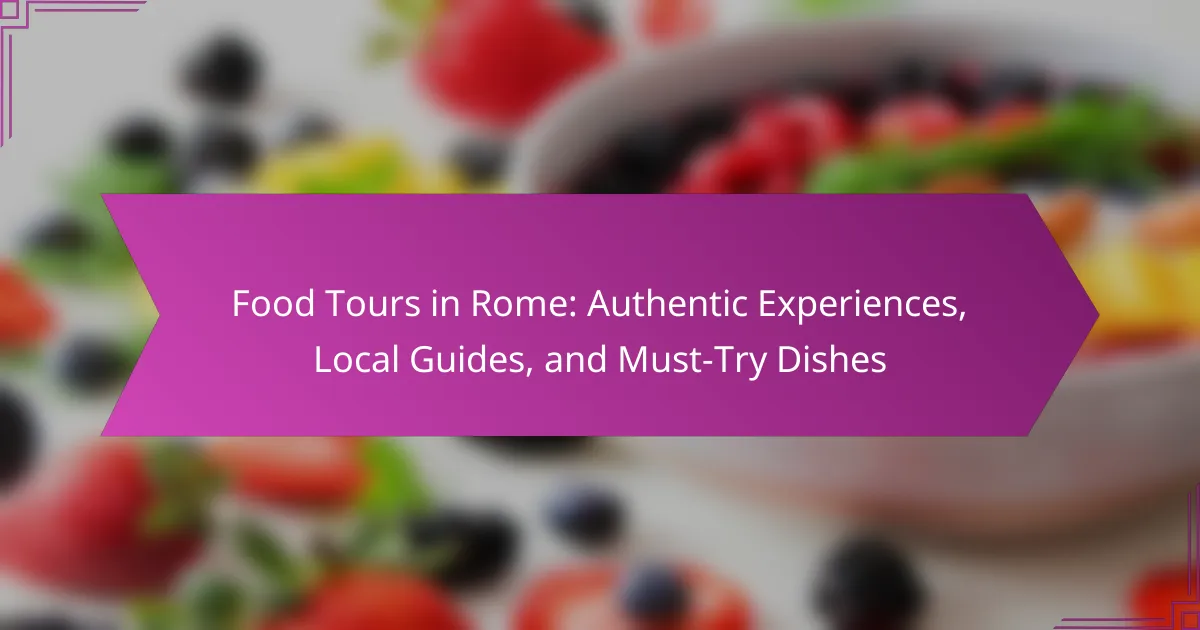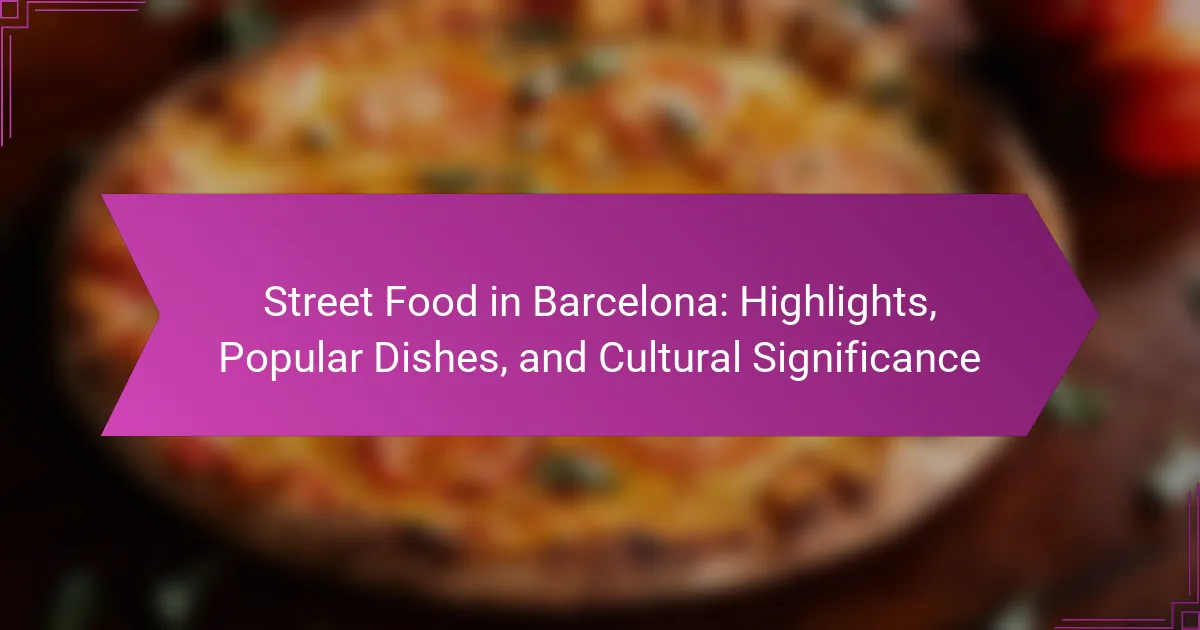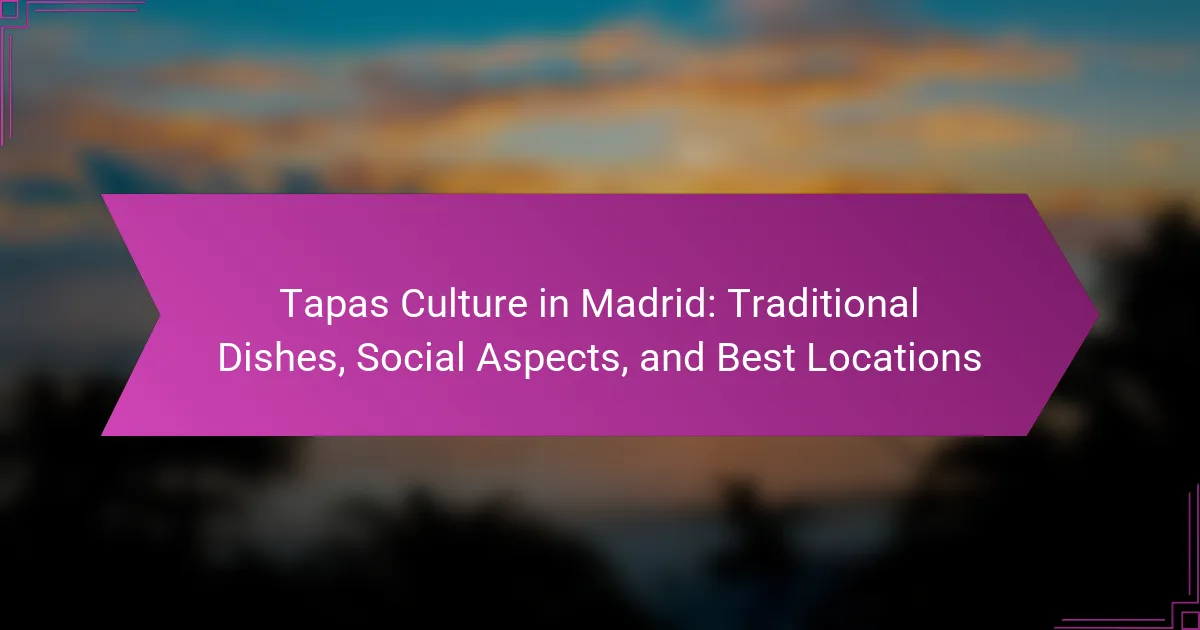Experience the vibrant culinary markets of Paris, where local ingredients and unique flavors come together. Discover must-visit markets like Marché Bastille and Marché des Enfants Rouges. Learn tips for navigating these markets, engaging with vendors, and sampling authentic dishes. Explore seasonal offerings that highlight the rich culinary traditions of the region.
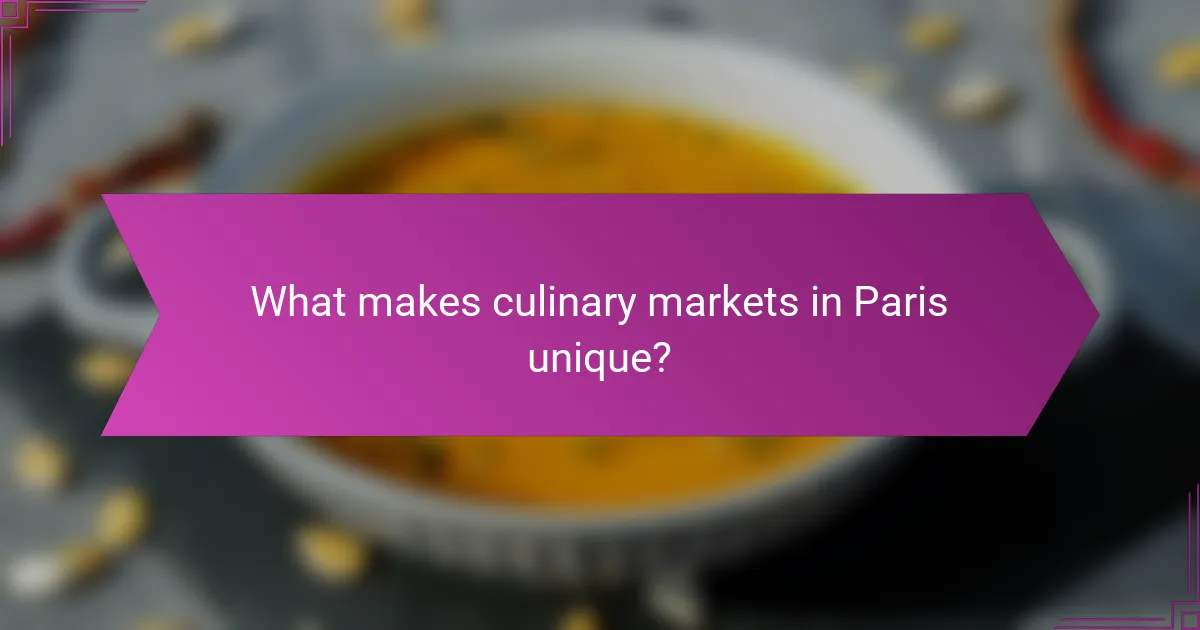
What makes culinary markets in Paris unique?
Culinary markets in Paris are unique due to their vibrant atmosphere, diverse local ingredients, and rich cultural heritage. These markets offer an array of flavors that reflect the region’s culinary traditions.
Local ingredients such as fresh produce, artisanal cheeses, and handcrafted charcuterie are staples found in these markets. Each market showcases seasonal offerings, allowing visitors to experience the best of Parisian gastronomy.
Additionally, culinary markets often feature live cooking demonstrations and tastings, enhancing the visitor experience. Engaging with local vendors provides insight into the food culture and culinary practices of Paris.
To fully enjoy these markets, visitors should arrive early to avoid crowds and sample the freshest goods. Exploring different neighborhoods offers a chance to discover unique market styles and specialties.
How do local ingredients influence flavor profiles?
Local ingredients significantly enhance flavor profiles by providing freshness and unique regional characteristics. In Paris, markets showcase diverse local produce, cheeses, and meats, influencing culinary creativity. For instance, herbs like tarragon and ingredients such as locally sourced goat cheese create distinct tastes that reflect the terroir. This connection between ingredients and flavors makes Parisian cuisine a rich tapestry of local influences.
Which culinary traditions are represented in Parisian markets?
Parisian markets showcase a rich tapestry of culinary traditions, including French, Mediterranean, Asian, and North African influences. These markets highlight local ingredients such as fresh produce, artisanal cheeses, and gourmet meats. For example, the Marché Bastille features diverse offerings from various cultures, enhancing the culinary landscape. Visitors can enjoy unique flavors, seasonal specialties, and vibrant atmospheres, making these markets a must-visit for food enthusiasts.
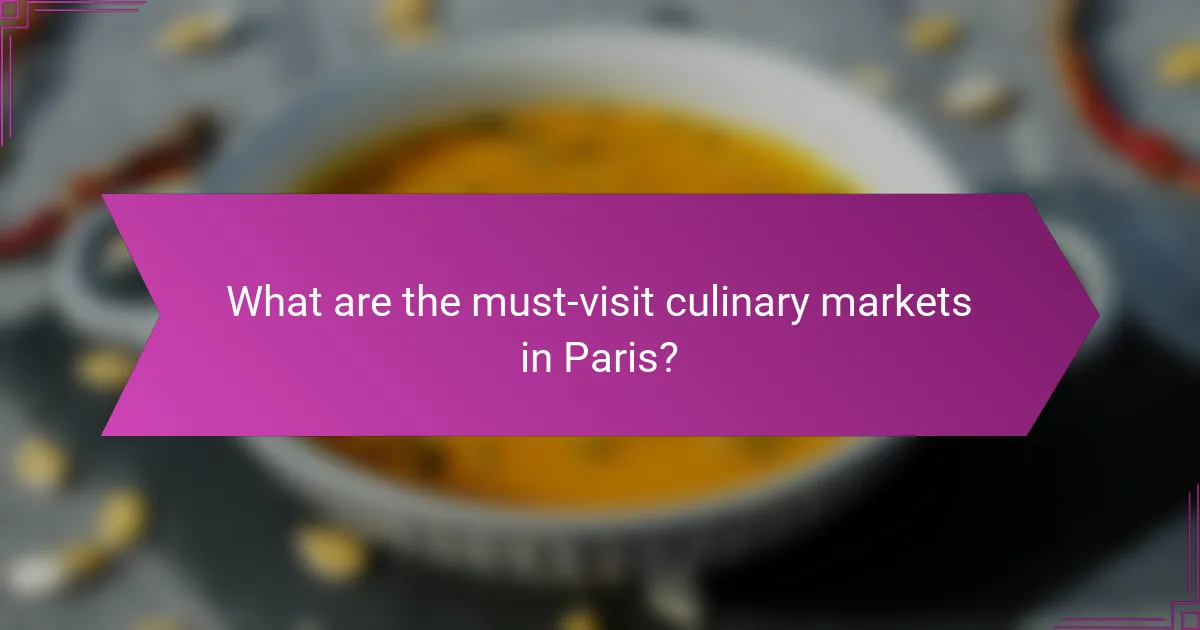
What are the must-visit culinary markets in Paris?
Paris boasts several must-visit culinary markets, each offering unique flavors and local ingredients. Notable markets include Marché Bastille, known for its vibrant atmosphere and diverse food stalls; Marché des Enfants Rouges, the oldest covered market featuring international cuisine; and Marché d’Aligre, famous for fresh produce and artisanal goods. Visitors should explore these markets for authentic culinary experiences and local delicacies.
How does Marché Bastille stand out among others?
Marché Bastille stands out for its vibrant atmosphere, diverse culinary offerings, and focus on local ingredients. This market features a variety of stalls showcasing fresh produce, artisanal products, and international cuisine, attracting both locals and tourists. Its unique attribute lies in the blend of traditional French flavors with global influences, creating a rich gastronomic experience. Additionally, the market hosts seasonal events and cooking demonstrations, enhancing visitor engagement and enjoyment.
What unique offerings can be found at Marché des Enfants Rouges?
Marché des Enfants Rouges offers a variety of unique culinary experiences. Visitors can enjoy diverse international cuisines, including Moroccan tagines, Italian pasta, and Japanese sushi. The market emphasizes fresh, local ingredients, enhancing the flavors of each dish. Additionally, it features artisanal products like handmade pastries and organic produce, making it a vibrant hub for food enthusiasts. The market’s historical significance as the oldest covered market in Paris adds to its charm.
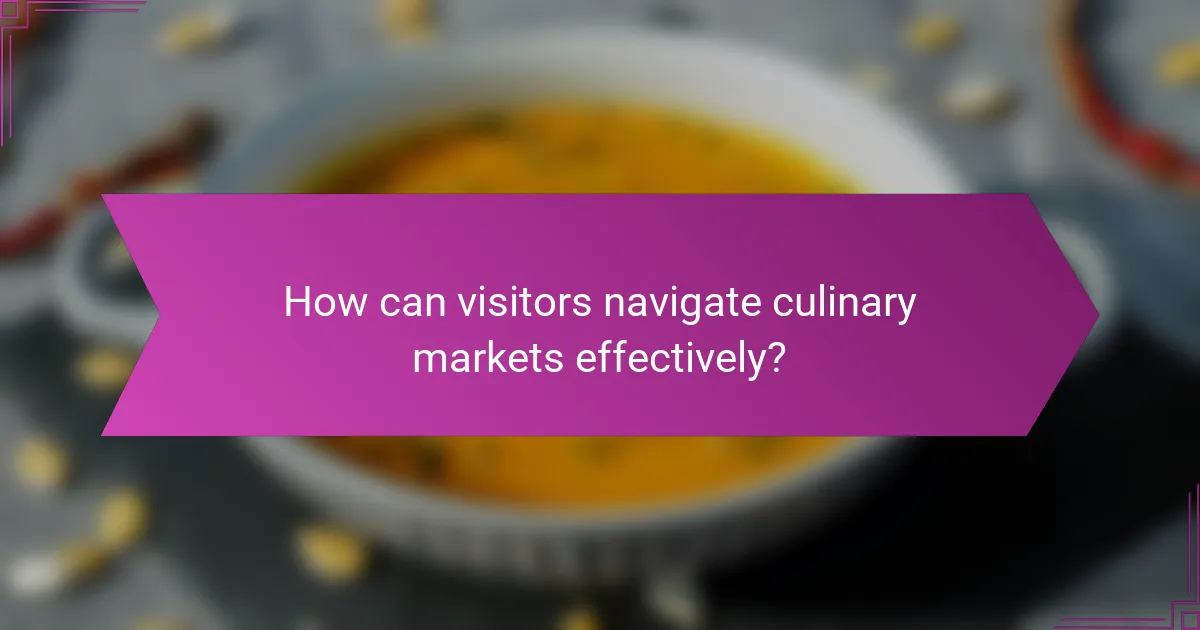
How can visitors navigate culinary markets effectively?
Visitors can navigate culinary markets effectively by planning their routes, engaging with vendors, and sampling products. Start by identifying key markets like Marché Bastille or Marché des Enfants Rouges. Use a map or app to locate stalls offering local ingredients and unique flavors. Engage with vendors to gain insights about products and preparation methods. Sampling food enhances the experience and helps in making informed purchases. Consider visiting during less crowded hours for a more relaxed atmosphere.
What are the best times to visit Parisian markets?
The best times to visit Parisian markets are early mornings and weekends. Early mornings provide the freshest produce and fewer crowds, while weekends offer a vibrant atmosphere with local vendors and unique products. Markets like Marché Bastille and Marché des Enfants Rouges are particularly lively on Saturdays. Spring and summer months are ideal for seasonal fruits and vegetables, enhancing the culinary experience.
How should visitors approach bargaining and purchasing?
Visitors should approach bargaining and purchasing in Paris’s culinary markets with confidence and respect. Engage with vendors by expressing genuine interest in their products.
Start by asking about ingredients and flavors to build rapport. Typically, prices are negotiable, especially for bulk purchases. Observe local customs, such as greeting vendors politely and thanking them for their time.
Be prepared to sample products, as this can enhance your experience and lead to better deals. Understanding the unique attributes of local ingredients, such as organic or artisanal labels, can also influence your purchasing decisions.
Finally, consider visiting during less busy hours to have more personalized interactions and potentially better prices.

What are the hidden gems within Parisian culinary markets?
Parisian culinary markets feature hidden gems like artisanal cheese shops, unique spice vendors, and local farmers selling seasonal produce. These markets offer authentic flavors and ingredients not found in typical tourist spots. For example, Marché des Enfants Rouges is the oldest market, known for its diverse food stalls. Additionally, Marché Bastille showcases regional specialties. Visitors should explore off-peak hours for a more authentic experience and engage with vendors for insider tips on local dishes.
Which rare ingredients can be discovered in specific markets?
Rare ingredients found in specific markets in Paris include black garlic, saffron from Provence, and wild mushrooms. These unique flavors enhance local dishes and are sought after by culinary enthusiasts. Black garlic, with its sweet, umami flavor, is prized for its health benefits. Provence saffron is known for its vibrant color and distinct aroma, making it a luxurious addition to various recipes. Wild mushrooms, foraged from nearby forests, offer earthy flavors and are often featured in seasonal menus. These ingredients reflect the rich culinary heritage of Paris and provide visitors with a taste of local authenticity.
How do local vendors create unique culinary experiences?
Local vendors create unique culinary experiences by emphasizing local ingredients and traditional techniques. They curate flavors that reflect the region’s culture and history. Personal connections with customers enhance the experience, allowing for tailored recommendations. Seasonal offerings further distinguish their products, ensuring freshness and variety.
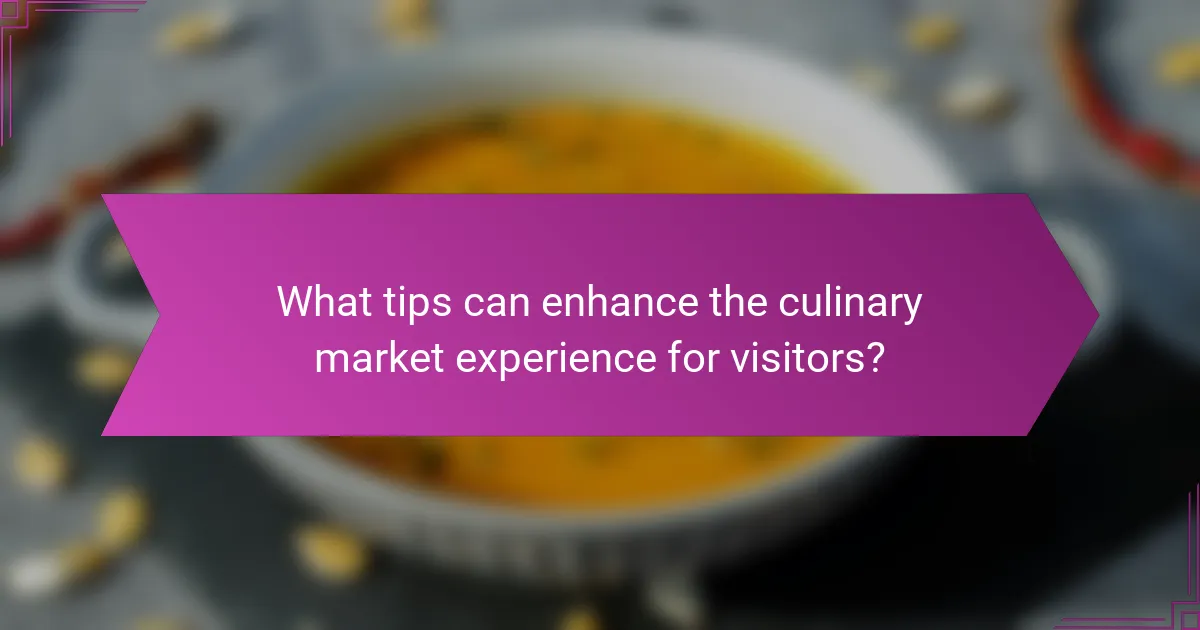
What tips can enhance the culinary market experience for visitors?
To enhance the culinary market experience for visitors, focus on immersive engagement, local interactions, and unique offerings.
1. Participate in cooking demonstrations to learn about local ingredients.
2. Engage with vendors for personal stories behind their products.
3. Sample diverse regional dishes to discover unique flavors.
4. Attend workshops on traditional cooking techniques or food preservation.
5. Explore seasonal specialties that reflect the local culture.
6. Take guided tours to understand the history and significance of the market.
Which local delicacies should every visitor try?
Every visitor to Paris should try croissants, macarons, escargots, and ratatouille. These local delicacies showcase unique flavors and ingredients that define Parisian cuisine.
Croissants offer a flaky, buttery texture, perfect for breakfast. Macarons provide a sweet, colorful treat with various fillings. Escargots, typically prepared with garlic and parsley butter, present a rare culinary experience. Ratatouille features seasonal vegetables, celebrating the essence of French cooking.
Exploring culinary markets allows visitors to discover these dishes fresh and authentic. Local vendors often provide insights into preparation methods and ingredient sourcing, enhancing the tasting experience.
How can visitors support local vendors and sustainable practices?
Visitors can support local vendors and sustainable practices by purchasing directly from culinary markets. Engaging with local producers fosters community connections and promotes the use of seasonal ingredients. Many markets feature organic and ethically sourced products, enhancing sustainability. Additionally, participating in workshops or tasting events can deepen understanding of local culinary traditions and sustainable practices. Supporting these markets not only benefits vendors but also preserves the unique flavors of Paris.
What common mistakes should visitors avoid in culinary markets?
Visitors to culinary markets in Paris should avoid rushing, neglecting local specialties, and overlooking vendor recommendations. Taking time to explore enhances the experience. Many visitors miss unique flavors by sticking to familiar options. Engaging with vendors often leads to discovering hidden gems and local favorites.
